Grasp a handful of information on shipbuilding relics and models of The Natonal Museum in Szczecin Maritime Department!
The sea has always inspired human inventiveness and the desire to look beyond the horizon was stronger than the risk of losing one's life. Based on the current knowledge, it can be assumed that from the very beginning the creativity in inventing floating structures was limited only by the builders' imagination and material. The art of sailing flourished with the development of civilization, especially in the coastal countries, for which the control of the waterways offered the possibility of economic and political expansion. New technical solutions and types of vessels were growing.
As early as when the first sailors set out to sea, the means of transport they used began to be reproduced in a miniature scale. The oldest known model was made of terracotta in 5000 BC in Egypt. The model of a boat that was found in a tomb was to serve the buried dead on a journey through the afterlife.

Photo 1
The collection of the Maritime Department of The National Museum in Szczecin has been created and developed to present particular stages of shipbuilding development; starting from a boat made of leather covering a wooden framing (photo 1), through boats from the Bronze Age (photo 2), to modern vessels.
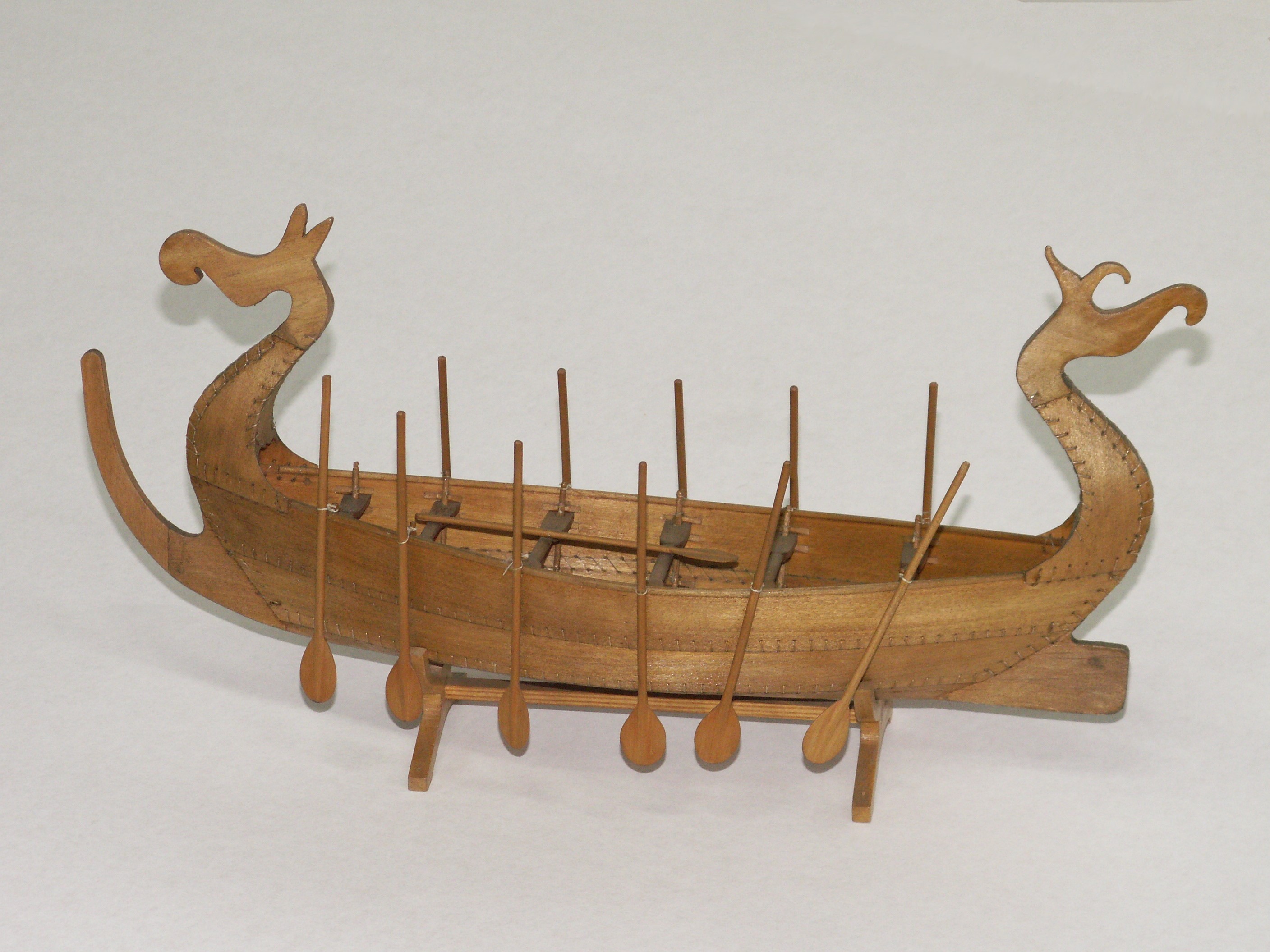
Photo 2
It is impossible to describe all of the over four hundred models under our care. Here is a handful of information about the chosen ones.
 Photo 3
Photo 3
After World War II, the Museum of West Pomerania was established in the building of the former Museum der Stadt Stettin. It began to collect new maritime items and to protect the pre-war ones. The old saved objects included many valuable exhibits, among others, a model of the SS Kaiser Wilhelm steamer. It is called a half model as it was made along the longitudinal axis of the hull and is exposed against a mirror. The reflection gives the impression of the whole unit (photo 3).
 Photo 4
Photo 4
Another interesting model is an Egyptian rowing and sailing boat. Looking at it one may imagine the conditions on board during rain or unfavorable weather (photo 4). Such complications, especially storms, often resulted in the ship's damage or its sinking with the crew aboard. To avoid this, over the centuries shipowners or captains donated so-called votive models for temples and churches.
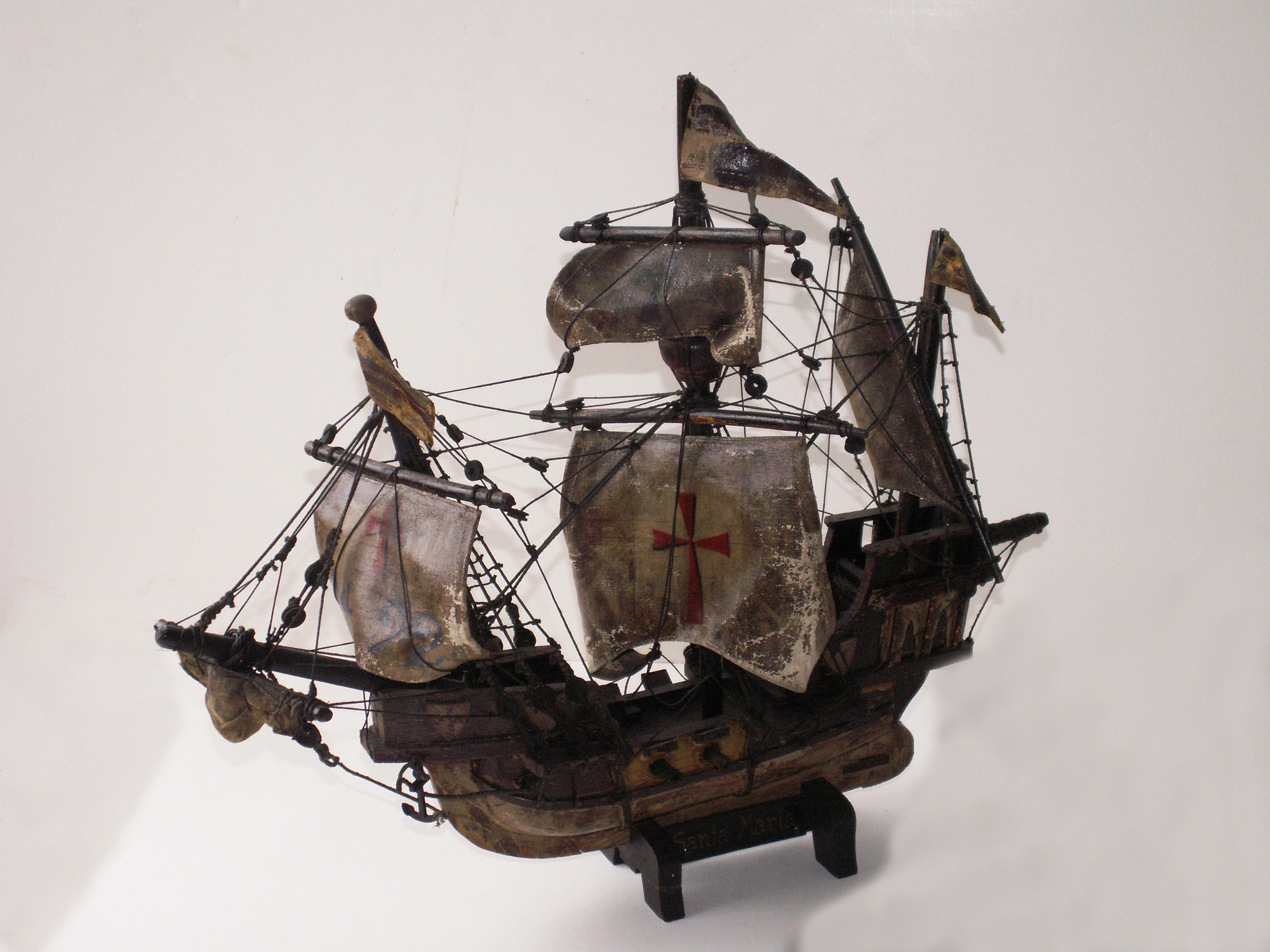 Photo 5
Photo 5
Donating such a model as a thanksgiving gift was supposed to ensure the sailor smooth sailing and a happy return home (photo 5).
 Photo 6
Photo 6
Our collection includes also models of Polish vessels from the times of the domination of the sail drive. A great example is "Wodnik", a galleon which fought in the Polish-Swedish war (photo 6). She is famous for the victorious Battle of Oliwa, where she sank a Swedish ship called "Solen".

Photo 7
Over the time, sailing ships gave way to steam-powered vessels. An interesting example of one is the SS "Polonia" passenger and cargo ship. Its model was commissioned by Count Stanisław Ledóchowski for the pre-war Maritime Museum in Warsaw, and after the war exile, it was sent to Szczecin, where it can be seen today (photo 7). The steam age, which lasted throughout the nineteenth century, ended with the development of the internal combustion engine in the twentieth century.
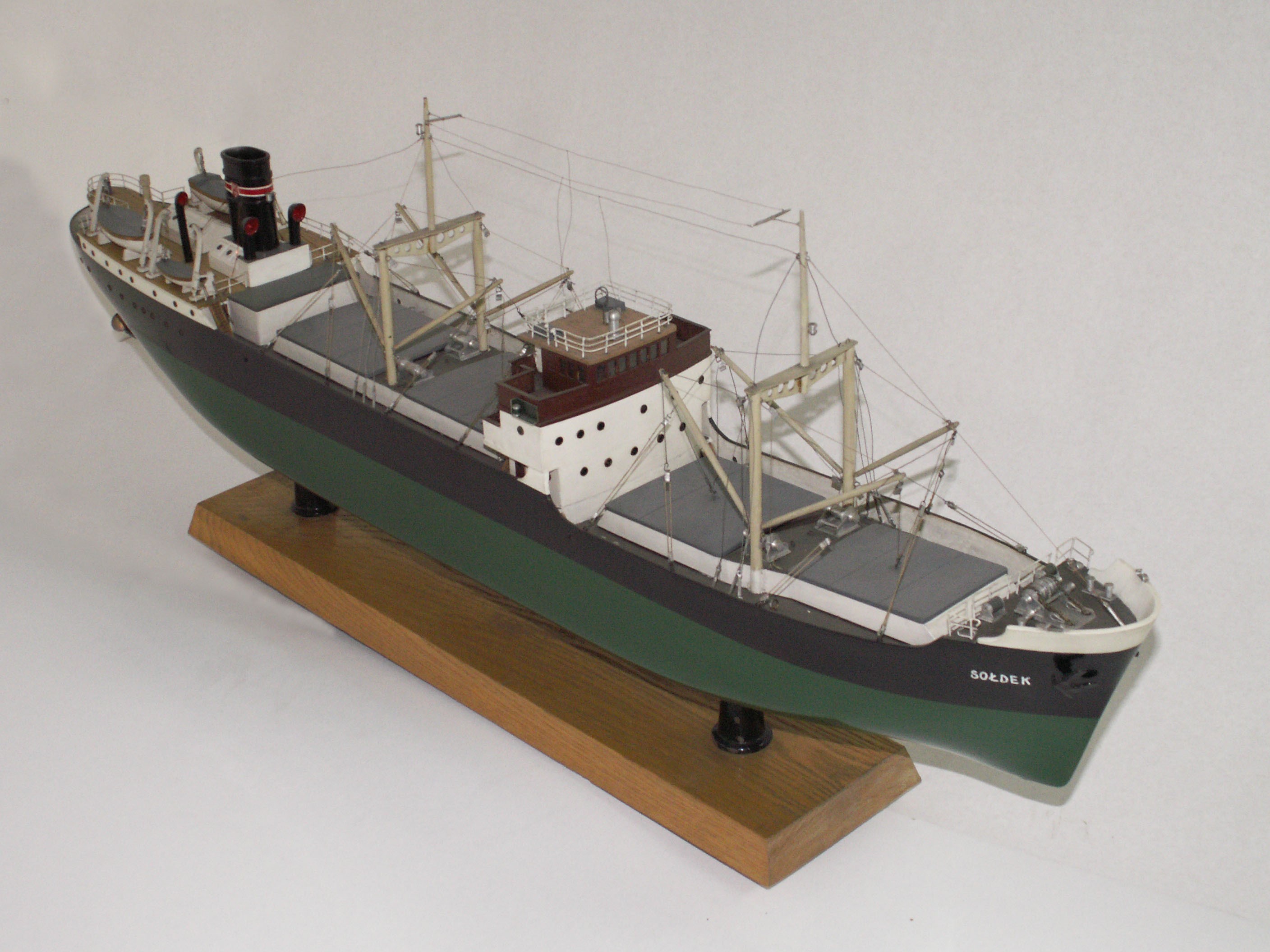 Photo 8
Photo 8
After the war, the reviving Polish shipbuilding industry began to create modern general cargo ships, bulk carriers, etc. designed for Polish and foreign shipowners by local constructors. For example, the first seagoing coal and ore freighter SS "Czułym" was built in the Szczecin Shipyard. Another interesting one is the SS "Sołdek" steamer (photo 8). She was built in the Gdańsk Shipyard and was operated by PŻM (Polsteam Company) from 1949 as the first Polish post-war seagoing coal and ore freighter. After decommissioning, "Sołdek" was converted into a museum ship and has been moored in Gdańsk on the Motława River.

Photo 9
In just twenty years from the construction of simple steam-powered vessels, Szczecin Shipyard made enormous technological progress, an example of which is the MS "Bow Fortune" motor-powered chemical tanker (photo 9). In the 1970s, she was a prideful showcase of the Szczecin Shipyard and was deservedly awarded the title of the Ship of the Year 1976.
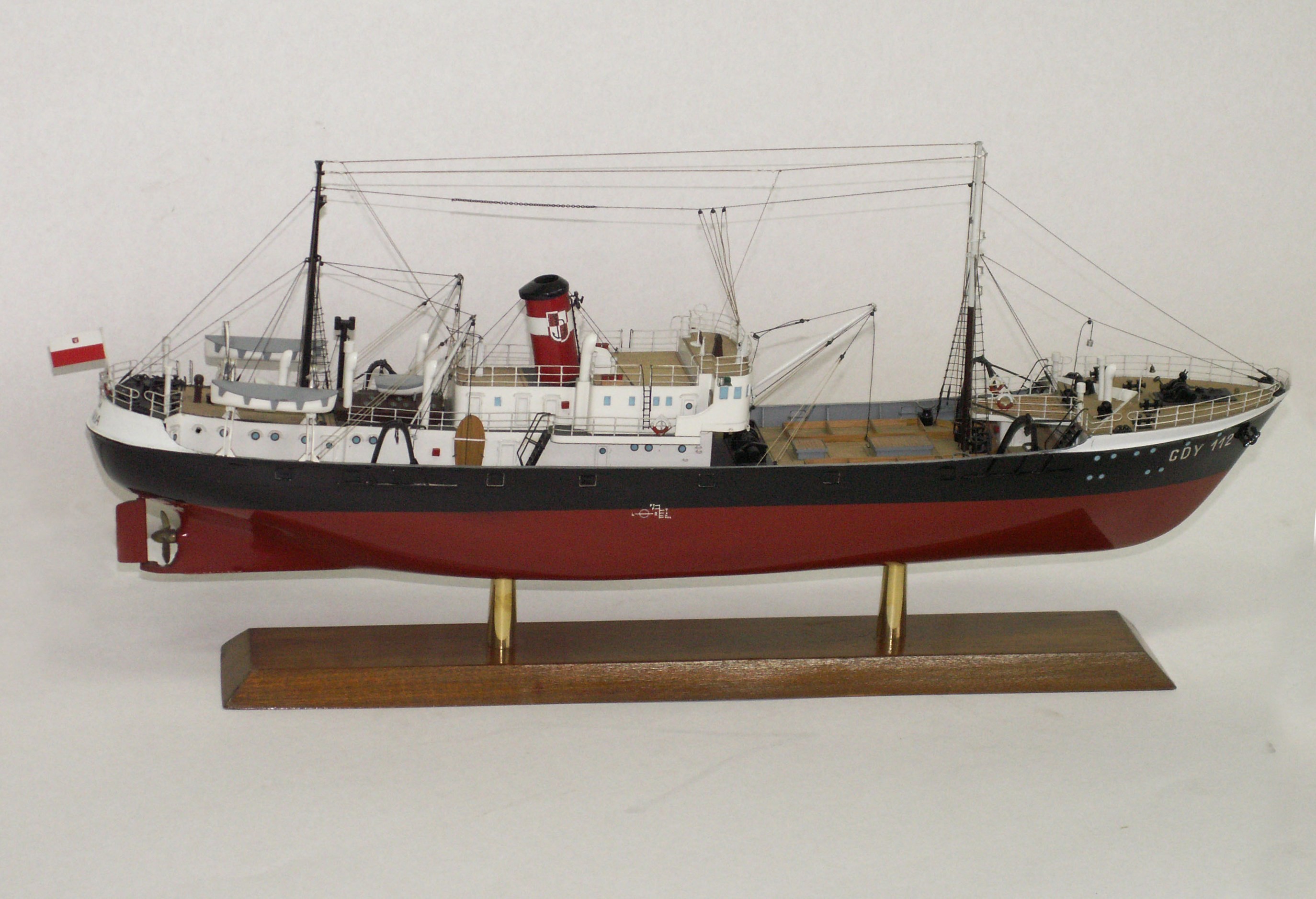 Photo 10
Photo 10
Apart from general cargo ships, bulk carriers and other representatives of the deep-sea fleet, fishing was also developed. The shipyards built trawlers, supertrawlers and deep-sea fishing bases, e.g. the B-10 supertrawler –GDY-112 (photo 10), as well as the "Pomorze" base ship.
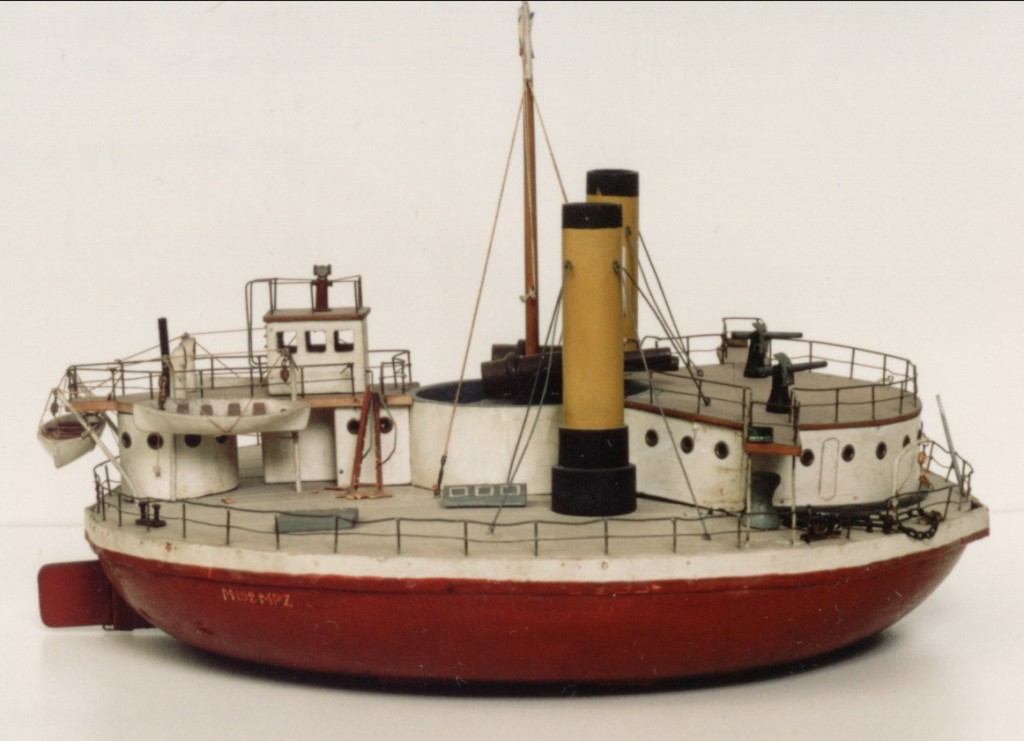 Photo 11
Photo 11
The most original construction, and at the same time the most "bizarre" vessel, is the so-called popovka (photo 11). According to the constructor's intention, who gave the ship a round shape, it was possible to rotate the entire hull so that the cannons on a fixed base would quickly fire at the enemy. The problem was the recoil inevitable after the shot, which caused the unit to rotate uncontrollably. This bizarre structure was unmanageable and was decommissioned relatively quickly.
The museum collections are not only models, but also numerous relics of shipbuilding technology, such as patent and admiralty anchors. The most impressive of them is exhibited on the Tobrucki Square, in the place where the Sedina monument stood before World War II. Slightly smaller ones can be seen on the eastern and western sides of the museum building at Wały Chrobrego. An interesting exhibit is the so-called deep-sea anchor, designed for keeping the vessel in one position at sea. It was used mainly at fishing bases, such as the "Pomorze". Other valuable objects are cargo lifts. They were the equipment of the famous Maritime High School, which was located on the "Kapitan K. Maciejewicz" steamer, mooring at Wały Chrobrego as a landmark of our city.
The list of exhibits is completed by a rich collection of navigational instruments, such as compasses, sextants, octants, ship clocks and an original navigation table from the pre-war "Poznań" steamship.
Edition and photographs by: Leszek Kocela (The Manager of The NMS Department of Sailing History)
